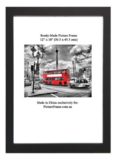We need to first mention that the range of Art Deco mirrors sold in our Online Store are not original 1930's pieces but  locally made, contemporary or modern reproductions. Original, period Art Deco mirrors, can sell for tens of thousands of dollars and will not be found on ordinary, commercial sites. Look for these instead but on dedicated, specialist online antiques resellers. The mirror, or looking-such glass, as it was anciently called, was a very early development of human engineering. From... the very dawn of time, men and women, instinctively looked at their reflection of their visages.
locally made, contemporary or modern reproductions. Original, period Art Deco mirrors, can sell for tens of thousands of dollars and will not be found on ordinary, commercial sites. Look for these instead but on dedicated, specialist online antiques resellers. The mirror, or looking-such glass, as it was anciently called, was a very early development of human engineering. From... the very dawn of time, men and women, instinctively looked at their reflection of their visages.
They wondered how and why it was so and could their reflections be made portable and durable. Water, even in vessels, was not convenient, but polished slate and rocks were more so. The earliest fabricated mirrors were slates of polished obsidian stone and natural volcanic glass. Examples of both have been found in Anatolia, Turkey and were dated 5900 BC. Other polished stone mirrors from Central and South America have been found and are about 2000 years old.
Older mirrors of polished copper were made in ancient Mesopotamia ( Iraq and Iran) about 4000 years ago and and in ancient Egypt from a millennium later. In the Far East, Chinese bronze mirrors were made from about 2000 BC with examples made of alloys such as copper and tin speculum as well as silver-mercury amalgams. Similar examples were also also found in neighbouring India. Later, with the advent of the Copper, Bronze and Iron ages, mankind learnt to smelt these ores and metals became used to create metallic and reflective mirrors.
These were not very good and produced mediocre resemblances of the person being mirrored, in addition, most glass was unrefined and coloured by its blue-green iron-oxide. Glass mirrors, coated in a layer of hot lead, are reported to have been invented in the Middle East around 100 AD, but the glass needed to be very thin to prevent cracking from the heat. In classical antiquity, between the 8th–7th century BC and the decline of the Roman Empire in the 5th century AD, mirrors were often manufactured of solid metals such as bronze, silver and more rarely, gold.
These polished metal mirrors produced duller, indistinct reflections than modern mirrors particularly when used indoor with the mechanical lighting of the time using candles, lanterns or lit braziers. Later, by mixing and smelting carbon with iron it became possible to make steel and it became possible to make large, polished steel mirrors until perhaps the mid 19th century . Metal-coated mirrors were invented in ancient Sidon, modern Lebanon, about 2000 years ago.
Gold-leaved glass mirrors were known in Roman times. The Roman author Pliny, in his Natural History, mentioned his compatriots had developed rudimentary mirrors by painting molten lead on blown glass. When better methods of manufacturing steel were invented in the Middle Ages, it became possible to make mirrors of bright, polished steel though crystalline-metal mirrors gave poor or distorted images, rusted and tarnished easily. Glass and mirror manufacture steadily advanced rapidly and incorporating metals such as lead, tin and mercury.
Making mirrors from glass sheets was invented in Venice in the mid 16th-century. Venetian glassmakers from Murano and other surrounding islets began coating their best clear glass sheets with liquid mercury thereby producing hitherto unparalleled distortion-free reflections. These hand-made, individually blown Venetian mirrors were quite expensive and limited to a maximum of 30 or 60 cms square because that's how much a glassblower could blow.
The Italian Republic of La Serenissima held on tightly on to this commercial state secret for more than hundred years but eventually the secret of manufacture was leaked out and sold to other French and English manufacturers. These immediately began making similar mirrors at cheaper prices since Venice no longer commanded the monopoly by which it could control supply and hence, prices. In particular, Parisian workshops succeeded in expanding into industrializing this process helping to lower the end price of the product. By the mid 1800s, it became possible to mass-produce large, flat panes of glass coated and amalgamated with heatless, chemical-coatings.
This mass production brought down the price of silvered glass and mirrors and made these products more affordable for the average consumer. Modern silver-glass mirror was invented by the German scientist Justus von Liebig in 1835. He devised the coating of a thin stratum of metal silver to glass by chemically reducing silver nitrate. His chemical fabrication process was later adopted for industrial manufacturing and led to the widespread availability of cheaper and more affordable mirrors for even the lower classes. Nowadays mirrors are manufactured a fine leaf of metallic foils of silver and aluminium, electrolitycally adhered to the back of glass panes and this results in excellent, distortion-free, clear and sharp reflections.
These reflective coatings are applied to clear float glass which due to its excellent transparency, ease of manufacture, rigidity, hardness, and compatibility to amalgamate smooth finishes. The reflective coating is typically applied to the back surface of the glass, so that the reflecting side of the coating is protected from corrosion and accidental damage by the glass on one side and the coating itself and optional paint for further protection on the other. These are now marketed in many disparate sizes, styles and designs and are no longer being used merely to see a reflections but additionally to make fashion, decor or even personal statements of taste.
An Art Deco ( Europeans sometimes call it Style Moderne) mirror is in the eponymous design period originating from the broadly interwar period form the 1925 International Exposition of Modern Decorative and Industrial Arts, through the 1930's and waning in the mid 1940's at the end of World War II. This style thrust a bold, new, modernistic approach to aesthetics, construction and design in art, fashion, graphics, cinema and above all, architecture. It drew ideas, influences and allied styling from preceding and contemporary Art Deco, Art Nouveau, the Bauhaus, Cubism and Serge Diaghilev’s Ballets Russes.
Decor and embellishment also derived from native American Indian, Egyptian, and early classical sources as well as from nature. The new Art Deco design was conceptually anti-traditionalist. It was born linear, clean, sleek, streamlined and smooth, forsaking conventional, traditional designs and instead proposing and propagating elegant, spatial, symmetrical and geometric themes. Art Deco developed to include neo-classical embellishments such as flora, starbursts, chevrons, arcs, columns, entablatures, flying buttresses, gargoyles, ogees, and other architectural devices. These supplanted not only the preceding revivalist Beaux-Arts but also the prior periods often replete with excessively ornate, elaborate and ostentatious styles.
Its invention was concurrent with the great, dynamic changes in materials, engineering and technologies which occurred before, during and after World War I. Contemporary man's psyche and creativity was was spurred on by the ductility, tensile strength and brilliant finishes that could be fabricated with iron, steel, ferro-concrete, glass, plastics and aluminium. Art Deco designs and styles became unfashionable in most countries in the mid 1940's but gained renewed interest the late 1960s.
Now in the 21st century, this alluring styles maintains its attraction and continues to inspire the artists, decorators, ateliers, fashion houses, ateliers, goldsmiths, silversmiths and jewellers. By way of footnote, if you have a mirror which has a loose, sprung, or borken picture frame a round it, do bring it to us so that we may assess the damage. I about half of thecases of damaged mirror frames, we are able to disassemble and repair the frame with this being considerably cheaper than getting a new custom-made mirror frame. For custom mirror frames or custom picture frames cost estimates please fee free to use our Picture Framing Prices Estimator.








